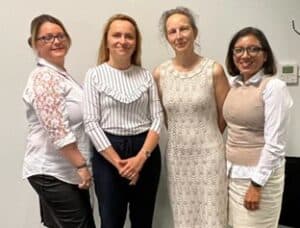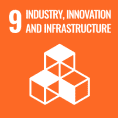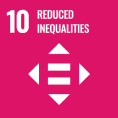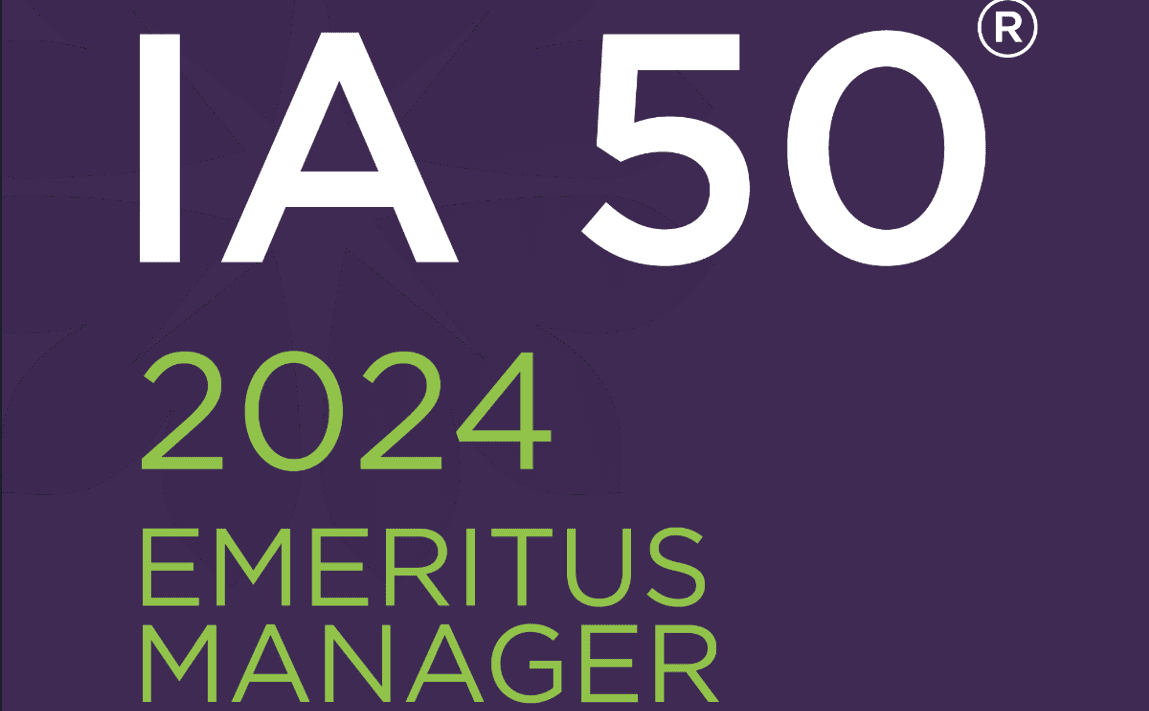According to the latest Global Gender Gap Report by the World Economic Forum, “Gender parity is not recovering. It will take another 132 years to close the global gender gap. As crises are compounding, women’s workforce outcomes are suffering and the risk of global gender parity backsliding further intensifies.” In terms of economic participation and opportunity, the gap is even wider. At current rates, it will take 155 years to close.4
At AGC, our commitment to diversity and gender equity goes deeper than the percentage of women shareholders and board members (100% and 67%, respectively). Or even the number of women-led partners (61% in 2021). It’s also reflected in the design and on-going work we do within our investment process to deliver funding to diverse, underserved groups such as women-led businesses.
After issuing our fifth annual impact report, we reached out to some of our investors to get feedback and to have in-depth conversations about trends and ways we can improve. Overall, we received strong, positive responses (from investors and our financing partners). People said they appreciated reading about how we’ve put money to work and the consistency and transparency with which we report our impact. Most said we are leading impact practitioners and appreciated the fact we collect feedback from two levels of stakeholders — partners and their SME clients. One impact analyst commented that she’s, “obsessed with our impact metric matrix”. Below are some of the highlights and a couple of clarifications we wanted to share:
01.

AGC’s model delivers financing to ‘extra small’ businesses that yields strong, positive impact for women.
Over half of the SMEs we surveyed last year employed fewer than 10 employees. Women-led businesses are generally smaller, so reaching these ‘extra small’ businesses provides a critical lifeline — especially in the midst of uncertain and adverse economic conditions we’ve seen over the past few years. The businesses we fund represent main streets around the world. They include family-run businesses with a single employee to businesses that employ 300 people and represent businesses from accountants to wooden pallet manufacturers. While probably not unicorns, these businesses are a critical foundation of local communities worldwide. Delivering funding through invoice discounting and similar products ensures that these businesses can buy inventory, keep the lights on and pay staff — an important way to fortify local communities against the next disaster or downturn.
02.
Listening to our partners and SMEs remains a critically important (if imperfect) tool.
In addition to robust data that provides insight into the industries we’re financing and the size of the transactions, we collect in-depth qualitative and quantitative feedback each year from two levels of our stakeholders — our financing partners and their SME clients. Our proprietary survey has evolved over time. It takes about five minutes for an SME to complete. We translate the survey and customize it with our partners’ branding along with a personal note. Many partners choose to add additional questions to help them understand their business and clients at an even deeper level. After the survey is complete, our partners receive their clients’ data, some analysis and the opportunity to have a personal consultation. Last year we conducted SME surveys with 30 of our partners, collecting 602 total responses from 17 countries. The response rates for the SME surveys ranged from 0% to 40%. The SME survey sample size represents 11% of the 5,454 SMEs we financed last year.

One thing we neglected to include in our report was the net promoter scores (how clients rate service/product). As with previous years, SMEs rated their financial service providers highly. (The median net promoter score last year was 5.0/5.0 (the average score was 4.6/5.0).) AGC’s median score with our financing partners was 5.0/5.0 (the average score was 4.9/5.0) (A full explanation of our methodology and metrics can be found in Chapter 4 of our impact report.)
03.
Last year was a hard one for women, but we saw some bright spots.
In 2021, we saw a 15% gain in the number of partners which are led by women (61% vs five-year average of 47%) and an 8% increase in the number of women employed by our partners (60% vs the five-year average of 52%). We believe this reflects our sustained internal focus on establishing funding relationships with the best partners, who also have significant female leadership. In terms of SMEs, we noticed modest declines (5% or less vs the five-year average figures across women’s representation in ownership, leadership and employees. We will actively monitor these trends but believe that the decline in women’s participation is likely due to the fact that women probably assumed greater care-taking responsibilities during the pandemic and when schools were not reliably in session. We will keep a careful watch on developments, but view this as an expected if unfortunate global trend which would probably been worse had our funding not been available.
04.
Despite rigorous policies and safeguards, assessing impact remains a subjective endeavor.
One investor commented that it was very helpful to hear what we don’t fund to better understand how we invest for positive impact. We have a robust ESGI policy that details how we do what we say we do throughout the investment process. We don’t fund consumers; we don’t fund large businesses or companies in industries described in the IFC’s Exclusion List and/or fossil fuel industry. Our Chief Impact Officer is a voting member of our investment committee, in part to ensure we evaluate impact in a holistic way that’s not easily caught by algorithms or tick boxes. An example of a transaction we passed on primarily for impact reasons was a transaction where people with poor credit in Africa could finance vehicles. On the surface it appeared to fit our strategy — acceptable returns for AGC, Africa, financing to an underserved population. The example they provided led us to conclude that it was not a fit for our fund. Financing would not have been directly deployed into productive purposes to support business activity and there was high risk of encouraging over-indebtedness. The example cited in their deck was a teacher who financed a BMW with payments that represented 40% of her take-home pay.
4 Gender Gap Report 2022. World Economic Forum. https://www.weforum.org/reports/global-gender-gap-report-2022?_gl=1*rzezzm*_up*MQ..&gclid=Cj0KCQjw7KqZBhCBARIsAI-fTKLlCno_SorJ9xjRYNxrmhGRqrifpPRpOneUFbOmZgWvdRfaM9JEGMsaAoGwEALw_wcB








